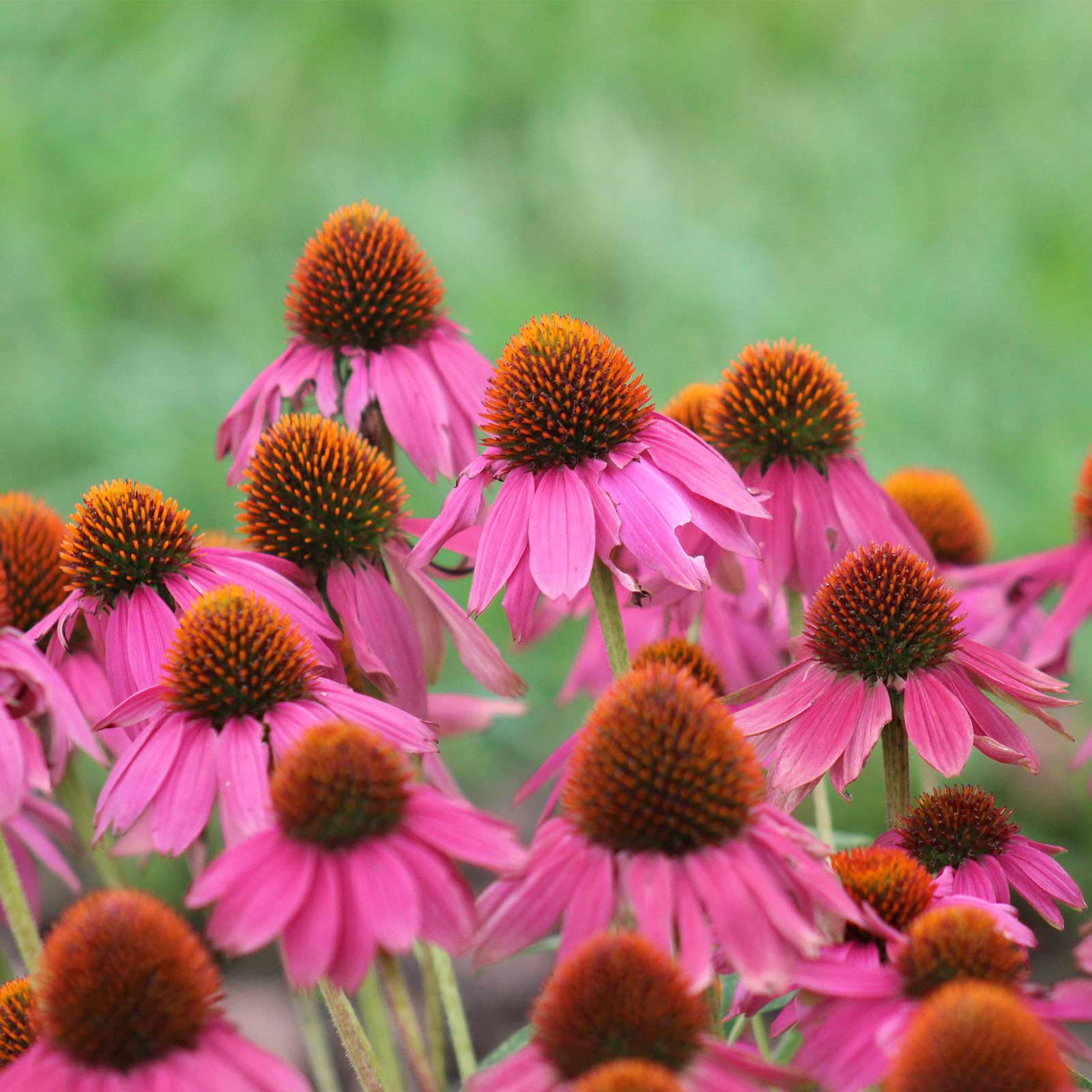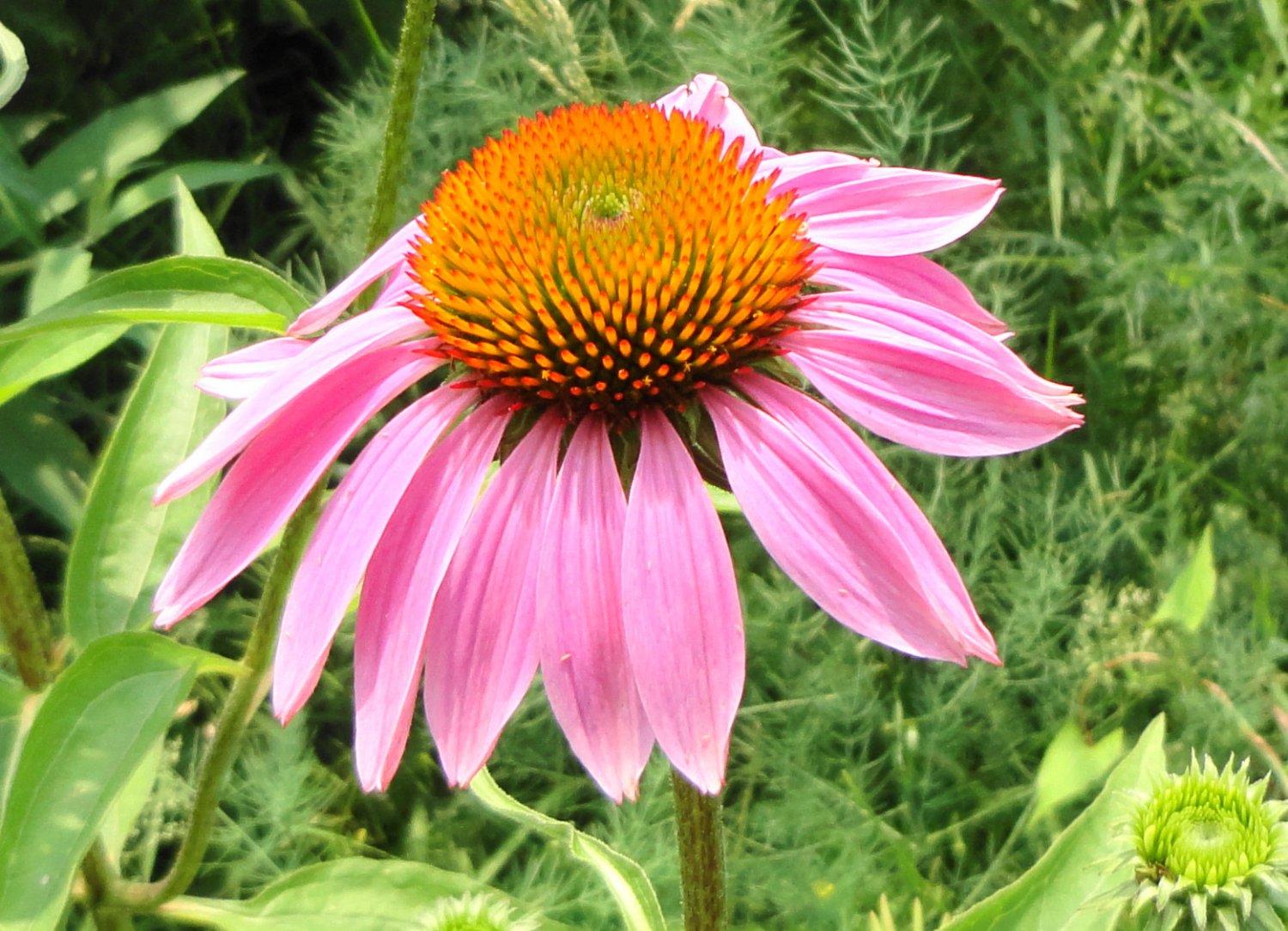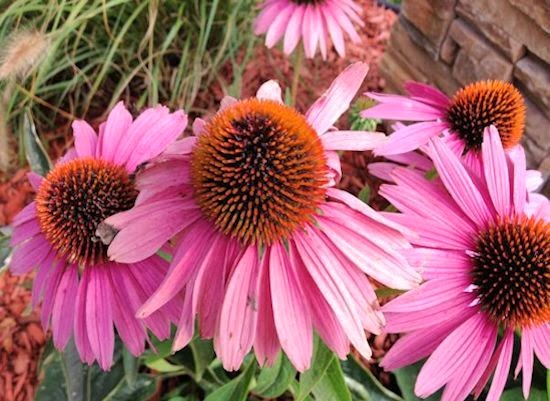

When day lengths are short and flowers are desired, provide 4 hour night interruption. Day lengths less than 12 or more than 16 hours will tend to keep the plants in a vegetative state. Sumagic applied as a drench at 1 ppm works also works well.Įchinacea are considered intermediate day plants, requiring 12 to 16 hours of day length to flower. Discontinue lighting once the plants begin to grow.ī-Nine at 2500 ppm or Sumagic at 5 ppm works well to control overall height. Plants should never be allowed to sit in excess water.īecause night interruption lighting will cause plants to stretch, make your first growth regulator applications before lighting begins and apply again two weeks after lighting begins. Overwatering may result in plants that grow more slowly in containers and are more susceptible to disease.

Once they have been transplanted and are actively growing, it is important that they are not overwatered. Just before transplanting, make sure the plugs are well watered. Keep plugs moist until they are ready to transplant. To get the plants to bulk up before winter, increase their day length and do not allow them to flower. One of the most notable signs of Aster Yellows is deformed flowers. Affected plants generally show yellowing of the leaves, reddening, and stunting in the early stages of disease development. Echinacea are susceptible to Aster Yellows disease, which is caused by a phytoplasma transmitted by the six-spotted (aster) leafhopper. Echinacea purpurea, commonly called purple coneflower, is a coarse, rough-hairy, herbaceous perennial that is native to moist prairies, meadows and open woods of the central to southeastern United States (Ohio to Michigan to Iowa south to Louisiana and Georgia).
.jpg)
If conditions are favorable they can be susceptible to Botrytis, Rhizoctonia and Pythium. Many of these insects carry plant viruses that can be transmitted to Echinacea. Scout for whitefly, aphids, thrips and many types of caterpillars. An 11-14 week cold period will increase the number of flowers and overall quality of Echinacea. Use slightly acidic soil with an EC of 1.0-2.6 using the pour through method for best results.Ĭold beneficial. This often leads to increased incidences of crown and root rots and a general decline in plant vigor. Echinacea DO NOT like to be over fertilized when growing in containers. Grower's Corner Grower's Corner Grower's CornerĪpply 100-200 N ppm of a standard water soluble fertilizer every 7-14 days once plants begin growing.Proven Winners ® Proven Winners ® Proven Winners ®.88 to 1.2 dry liters in volumeġ.0 to 1.3 dry quarts / 1.1 to 1.41 dry liters in volumeġ.1 to 2.1 dry quarts / 1.2 to 2.3 dry liters in volumeġ.7 to 2.3 dry quart / 1.87 to 2.53 dry liters in volumeĢ.26 to 3.73 dry quarts / 2.49 to 4.11 dry liters in volumeģ.5 to 4.3 dry quarts / 3.85 to 4.74 dry liters in volumeġ.19 to 1.76 dry gallons / 5.24 to 7.75 dry liters in volumeĢ.32 to 2.76 dry gallons / 10.22 to 12.16 dry liters in volumeĢ.92 to 4.62 dry gallons / 12.86 to 20.35 dry liters in volumeĥ.98 to 6.08 dry gallons / 26.34 to 26. 96 dry liter in volumeġ.4 dry quarts / 1.59 dry liters in volumeġ.89 of a dry quart / 2.08 dry liters in volume Keep in mind, specific varieties and different growing conditions can affect the rate at which plants grow. Order your award-winning 'Magnus' Purple Coneflower from Nature Hills Nursery today! Its brilliant purple-pink color works well with blues (like Perovskia) and its rounded shape nicely complements the linear lines of plants like Liatris. 'Magnus' can be massed at the back of a perennial border or showcased as a single specimen, and it is equally at home in native gardens or in more formal plantings. It prefers well-drained soil and will tolerate drought conditions, which makes it the perfect choice for summer gardens. Butterflies and bees will adore it! After they flower, the cones can be dried to use indoors or left on the plant for the birds to enjoy during the winter.Īlthough 'Magnus' is slow to start in the spring, it loves the sun and grows quickly with the onset of hot summer weather. The stems can be 2 to 4 feet long making 'Magnus' an excellent cut flower and stately border plant. 'Magnus' Purple Coneflower is a relative of the sunflower and features a central cone surrounded by wide, flat purple-pink petals that stick straight out - they don't droop like other Coneflowers are prone to do. 'Magnus' was awarded the title of 1998 'Plant of the Year' by the Perennial Plant Association. A native of the dry prairies and open woodlands of North America, Purple Coneflower's have long been a favorite of gardeners worldwide. 'Magnus' Purple Coneflower, Echinacea purpurea 'Magnus', is a gorgeous native plant that grows strong and true and makes a spectacular cut flower.


 0 kommentar(er)
0 kommentar(er)
